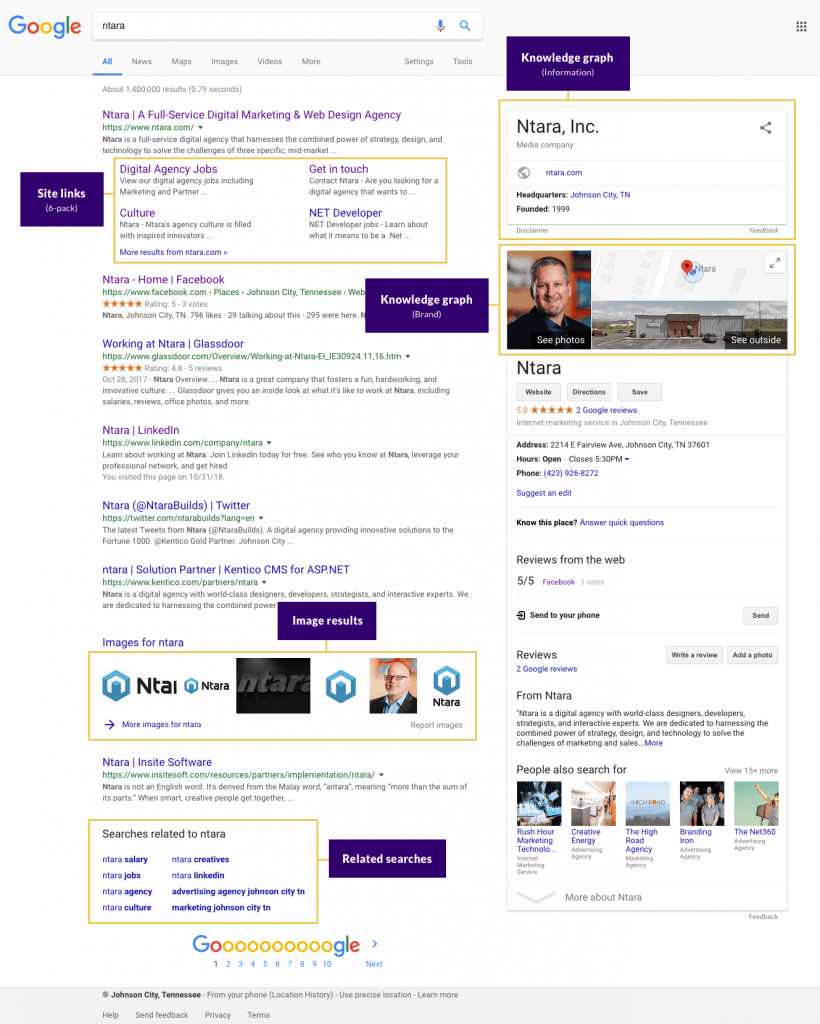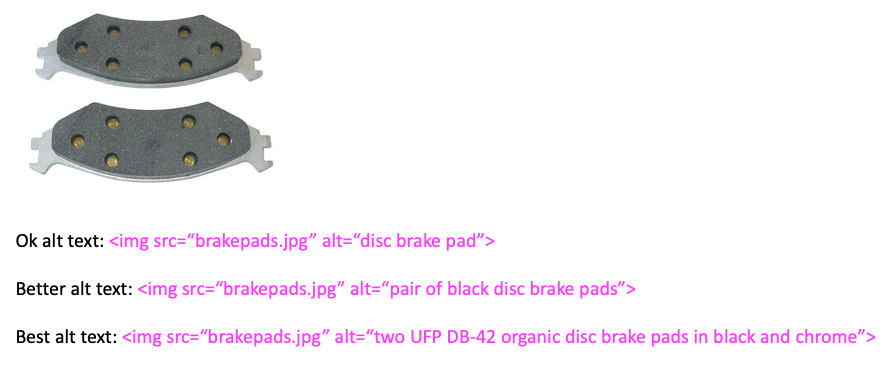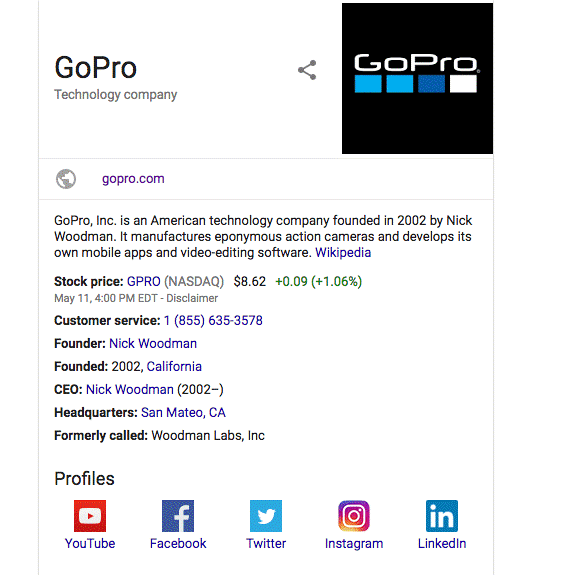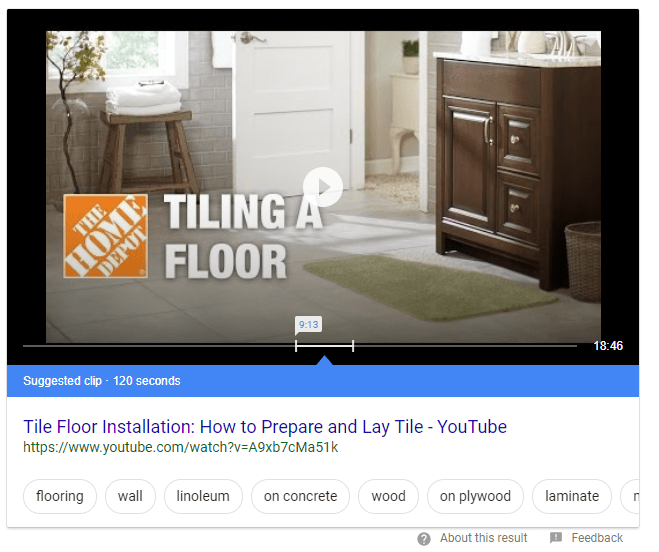If your organization isn’t consistently prioritizing a corporate search engine optimization (SEO) strategy, you may never earn significant organic traffic. What’s worse—you’re likely competing with yourself.
In this article, we’ll cover:
- Defining SEO
- SEO and search engine marketing (SEM)
- Influencing Google results
- Creating a search strategy
- Advanced SEO tactics
- SEO strategy maintenanc
What is SEO?
First, let’s cover some basic terminology.
- Search engine: the website people use to find content on the internet
- Search query: the word or phrase someone types into the search bar
- Search engine results page (SERP): the paginated list of links that the search engine returns after a search query
- SEO: the active, strategic effort to improve your website’s chance of showing up in SERPs for related search queries
While many search engines exist, industry experts agree that the top 10 best and most popular search engines are:
Google (the leader—by far)
Bing (powered by Microsoft)
Yahoo (powered by Bing since 2011)
Ask.com (formerly Ask Jeeves—hello, early aughts)
AOL.com (they’ve come a long way from AIM chatrooms)
Baidu (China’s most popular search engine)
Wolframalpha (the “Computational Knowledge Engine”)
DuckDuckGo
Internet Archive
Yandex.ru (Russia)
Since Google captures more than 90% of the market share worldwide, we use Google as our source of truth.
What is the difference between SEO and SEM?
“Search marketing” is the umbrella under which multiple search-related efforts fall. Search Engine Land defines search engine marketing (SEM) as “buying traffic through paid search listings” and SEO as “earning traffic through unpaid or free listings.”
Paid ads typically get prime real estate at the top and/or bottom of SERPs. And organic results typically appear next. Like this:

SEO is truly organic, meaning you can’t buy placement for results. And SEO requires a long-term investment of time—with continuous content and UX optimization. SERPs are influenced by Google’s ever-changing algorithm, which uses multiple factors to find content that answers specific user queries. As such, your corporate SEO strategy must be continually revisited and optimized.
How do you influence Google search results?
Multiple factors influence Google’s organic search algorithm but the two you have the most control over are relevance and authority. But before you can optimize for either, ensure the search bots can effectively crawl your site.
Relevance
Simply put: Google wants to be confident that its users are getting what they need from SERPs. Google’s bots look for signals that your site truly answers its search queries. They take signals from keywords (exact, related, long-tail, short-tail). They look at content hierarchy, page structure, URL structure, and more.
Also within the realm of “relevance,” Google wants to be sure its users are having a good experience on resulting sites. Do the pages load quickly or are users bouncing? Is the site mobile friendly or only optimized for desktop? Is the architecture of the site logical and easy to navigate? Are users engaging with the calls to action on the site? Perform well in these areas and Google may reward you. Perform poorly and you can pretty much guarantee you’ll never hit page one.
Authority
This is mostly about backlinks from trusted sites. Google’s bots may decide that your content is relevant. And if other sites agree, they may feel compelled to backlink to it. The more sites that do this, the more Google will take notice.
Google places more value on backlinks from sites it trusts. The higher the relevance and authority of a site, the more value a link from that site carries. Google’s algorithm is extremely sophisticated and is regularly optimized to ensure its users have the best experience possible.
How do I create an SEO strategy?
Before you dive into SEO, you need a solid understanding of your audiences and your website goals.
Personas and customer journey maps
Who is your target audience? What do you know about them? What data have you collected? We highly recommend primary research to identify when and how people seek information. This will help you create an informed SEO strategy, as well as deliberate user paths through your site to conversion.
EX: An auto parts manufacturer who recently added ecommerce to its site. Their primary customers are smaller auto shops and larger distributors who are searching for the lowest price point to meet their purchasing goals while maintaining inventory for their end-customers.
EX: Personas
- Small shop manager
- Expects easy-to-use website with solutions that cater to varying order sizes
- Needs the lowest possible price to provide maximum value for their customers
- Large distributor purchasing rep
- Expects clear information delivered at each step of the process
- Needs reliable pricing information
Website goals
First, identify the goal(s) of your website and each of its sections. What are you trying to accomplish? Who’s coming to the site? Why? What do you want them to do? What steps will they take to get there? It is critical to tie your SEO strategy to SMART goals so you can accurately track the success of your efforts.
EXAMPLE:
Site goal: Increase the number of small shops who use the “Quick Order” feature by 10% this year.
- Specific: Yes.
- Measurable: You bet. We can track success via website analytics.
- Attainable: Yes, we can totally do this.
- Relevant: Of course. Automobiles require upkeep and maintenance. Parts are a necessity.
- Time-sensitive: Yes, this quick order feature is being piloted for the next two months.
Keyword research
Based on your goals and the intent of each site section, conduct keyword research to see what people are actually searching in relation to each topic. There are many keyword research tools available; we use SEMrush.
Look for two main metrics when conducting keyword research: monthly search volume (MSV) and keyword difficulty (KD). MSV tells you how big the demand is, i.e., how many times this particular phrase is being searched on average each month. KD gives you visibility into the competitive space. How hard will it be to rank for this phrase? You’ll want to consider both variables (MSV and KD) in your approach.
Content optimization
There are two ways to approach content optimization: proactively and retroactively.
When writing content for a new site build or redesign, we highly recommend taking a proactive approach. This means making all content decisions with the most practical search opportunities in mind. The knowledge you gain through this process should inform your navigation, information architecture, the URL structure—plus every piece of content.
But be careful: Don’t stuff your content with unnecessary keywords. Write as conversationally and naturally as possible. When writing, keep in mind the purpose of the website, the section, and the page. Revisit those search opportunities. And write content that, simply put, answers the queries of your users.
EX: Disc brake pad detail page goals
- The purpose of the website is to promote the auto part manufacturer
- The purpose of the page is to inform users details on the disc brakes
- The call to action of the page is to get users to utilize the quick order function
- The keywords with MSV and KD are all about disc brakes and good deals on brake pads
- Content should inform users and influence them to purchase those products
If you are unable to optimize your content proactively, you can still do so retroactively (i.e., after your website is launched). Start by reading the content of your page. What is it about? What are the CTAs? What might people search when looking for this content?
Conduct keyword research to identify related keywords and their MSV and KD. Read through the rest of the section. Revisit your website goals. Keep your copy as conversational and natural as possible as you edit. Your goal remains: Solve actual search queries.
Meta data
Meta titles and descriptions are what users see on the SERP. They have the same job as the subject line of an email. If it sounds like something they want to read, they’ll be more likely to click through. If it doesn’t, they likely won’t. Remember, you are working toward an intuitive, cohesive user path from Google to your website. If someone clicks your search result, they should find the content they were expecting.
As you complete content for each page, write a page title and meta description that summarize the page’s content. Include keywords and phrases as possible, but your primary focus here is to accurately summarize the content of the page.

Additionally, you’ll want to write image alt text for each image that appears on your pages. This text may include keywords, which will help with rankings. But alt image text can also help users who are blind or visually impaired have a richer experience on your website. Be as descriptive of the image as possible. Avoid jargon or flowery language.

Build your web presence through backlinking
There are multiple considerations and approaches for building a backlinking strategy. Here are a few thought starters:
- Ask your customers to backlink to your site.
- Identify what sites currently mention your brand but don’t link to it.
- Identify which sites link to your competitors’ sites but not yours.
- Identify websites, blogs, etc., that might benefit from your content and may also be willing to link it.
Build out a backlinking plan that includes what you want to do when, and what messages you’ll deliver to whom. And—most importantly—get started. Take note of the results of each inquiry and adjust your backlinking strategy accordingly.
Also, keep in mind that not all links earned are equal. As WordStream outlines, “follow links” come from sites of high relevance and authority, whereas “no-follow links” won’t be counted toward your site’s “link juice.”
One of the best “no-follow” examples is Wikipedia. You don’t have to be an expert on any given subject to update content on a Wikipedia page. Google knows this and, as such, doesn’t give much equity to links from Wikipedia. Does that mean you shouldn’t pursue links from Wikipedia? Absolutely not! Traffic is traffic, and that’s ultimately what you want. Just don’t expect a link from Wikipedia to improve your own organic search performance.
Maintain your technical foundation
If search bots can’t crawl your site, your content will never show up in search. You must check regularly for technical issues that could have negative search implications, such as broken links, 404 errors, redirect issues, missing meta data, and duplicate or thin content.
There are many tools available to identify and manage technical issues and, again, we use SEMrush. This tool can help identify errors on your site and provides recommendations to fix them. Whatever tool you choose, technical optimization is a continual process of identifying and fixing. As with all aspects of SEO strategy, you’re never truly “done.”
Never stop learning
SEO is a marathon, not a sprint. And Google is consistently moving the finish line in the name of better UX. A good SEO strategy should be fluid to incorporate these changes.
To lead an SEO strategy, you must continually educate yourself on the nuances of each new Google release. Each time the algorithm changes, you must learn quickly and tweak your strategy.
What about advanced SEO?
Once your SEO strategy is in place, set your sights on more advanced SEO strategies. Each of these can help you stand apart from competitors on SERPs by delivering better UX for search engine users
Schema
Schema is additional meta data you can put on your website to enhance your search engine results and help users find what they want faster. It includes additional SERP content, such as phone numbers, recipes, ratings, and movie times, to name a few—reducing and sometimes eliminating the need to click for more info. There are many types of schema, all of which can be research further at schema.org.

Featured content
Google often shows blocks of descriptive content above other organic search results. Google calls these “snippets” and they were designed to answer user queries more quickly (i.e., without requiring a click). Featured snippets also include URLs to allow users to drill down and learn more about the topic. As such, they can return increasingly high click-through rates.

To increase your chances of being featured in Google’s snippets, the Content Marketing Institute offers five tips to optimize your content:
- Use your website to answer specific questions with in-depth answers.
- Know the questions your readers are asking.
- Create high-quality, comprehensive, entertaining, user-focused content.
- Commit to providing the best answer to a query.
- Use question and answer (Q&A) pages.
How do you maintain a successful SEO strategy?
The lifeblood of any SEO website strategy is the analytics. How can you make your strategy stronger if you don’t know what’s working well and what isn’t?
Technical maintenance tracking
First, you must submit your sitemap to Google Search Console and Bing Webmaster Tools. Search bots will crawl regularly to pick up new pages but we recommend resubmitting any time a page is updated to expedite the process. Ensure your site is listed in the robots.txt file so all other search engines can access it.
Find a reliable tool (or digital agency) to stay up-to-speed on any technical errors that occur on your site. Most technical SEO tools generate user-friendly reports that can help you identify and address errors across your site. In addition to SEMrush, we recommend Moz’s Site Crawl and Screaming Frog.
Position tracking
Track your targeted keywords. This reporting will help you keep tabs on your ranking and keep a pulse on how your SEO strategy is affecting organic performance. Another reminder: This is a long-game and will take time.
Backlink tracking
Your reporting should also allow you to analyze links to your site and competitor’s sites. Are the backlinks you have helping or hurting your organic ranking? What opportunities exist that we haven’t yet captured? Backlinking strategy must also be fluid. Learn what you can from your outreach efforts and analytics, then adjust accordingly.
Organic traffic metrics
To track organic site metrics and related user behaviors, we use Google Analytics. (There are many similar tools of varying price and functionality.) Whatever you use, the key to success is translating your business goals to website KPIs, then identifying actions across your site to track engagement and conversion. With proper tracking in place, you can better understand the behavior of your organic traffic—and use it to further optimize.
SEO strategy and beyond!
SEO is part science, part art. It’s part expertise, part experience. You will make decisions that move the needle and you will make some that don’t. It’s not about getting it perfect on the first try. It’s about trying different things and adjusting based on what you learn
If you make the commitment to long-term SEO, you can reach new audiences through organic search and make a true impact on your business.
Need help mapping your SEO strategy? We’d love to help.